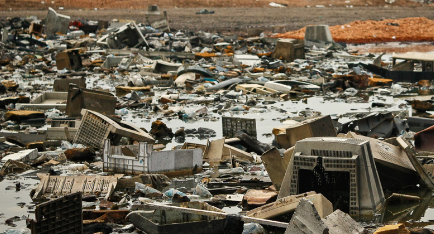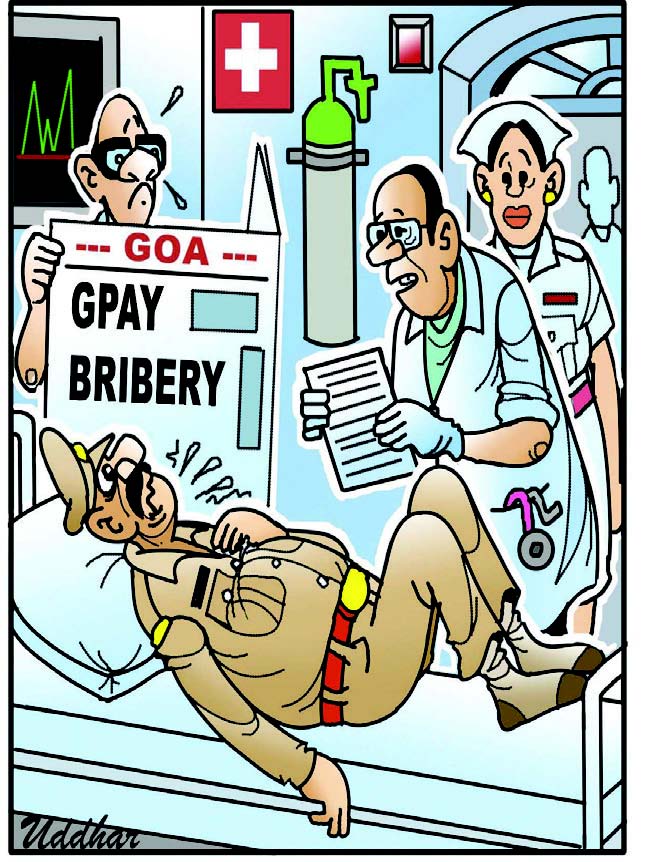
STHRIGDHARA NAIK
With the globe expanding technologically, the amount of hazardous e-waste generated is also rising drastically. The e-waste generated consists of toxic components which if not disposed safely, disturbs the normal functioning of eco-system. Therefore, the safe disposal of e-waste is a matter of paramount importance. On the occasion of fourth International E-waste day that is celebrated worldwide today, team Herald spoke to the officials of Goa State Pollution Control Board (GSPCB) to gain an insight into the State's policy of e-waste management.
Speaking to Herald, Seby Colaco, an official of PCB said, the GSPCB has issued a circular wherein all the government offices and other departments have to hand over their e-waste only to the registered e-waste dismantlers.
There are two GSPCB authorised agencies which deal with collection and dismantling of e-trash in the State, namely, Global E-waste Management system and Group ten plus, situated at Margao and Saligao respectively. In addition, Karo Sambhav agency located at Panjim deals with the collection of e-waste, he added.
Speaking further he said, e-waste though is sub-categorised into various categories based on the coding as per the e-waste rules, mainly it is categorised into two main types. The Information Technology (IT) waste and the Consumer Electrical and Electronics (CEE) waste. While IT e-waste incorporates the devices such as Computer Monitors, Laptops, keyboards, cellphones, cordless phones, Central Processing Units, desktop PCs, memory cards, computer mice etc; the television set, air conditioners, washing machines, refrigerators, fluorescent tubelights, mercury bulbs falls under the category of CEE waste.
“Annually, we receive around 180 metric tonne e-waste through dismantlers and approximately around 300-400 metric tonnes e-waste is received from e-waste collection centres, Colaco added. Speaking about the e-waste storage site he said, the agencies which are having smaller storage area send the recyclable e-waste directly to the recycling unit after following the procedure and maintaining form 2 and form 3, without storing it at site. GSPCB has granted permission to the e-waste collection centres recently. So from next year many of the collection centres will come under jurisdiction of GSPCB which will definitely increase the authorised e-waste collection to manifold, he added further.
Goa being a smallest State, doesn't have any recycling unit. We only deal with collection, dismantling and segregation of e-waste. Once the e-waste is sorted systematically, those components which are worth recycling are sent out-of-the State for its safe disposal and recycling, informed the Regional officer.
Soham Prabhu, the CEO of Global E-waste Management System said, ours is a private firm and we are authorised by GSPCB for e-waste dismantling. We collect e-waste from all the sectors including private, corporate, government sectors and also facilitates door-to-door e-waste collection. The process of e-waste collection is simple. Once the pickup time and date is scheduled by the consumer by logging onto our website, we send the vehicle and collect the e-waste. We are also open to schedule the pickup over telephonic conversation, said Prabhu.
Global E-waste management has annual collection and dismantling capacity of around 100 metric tonnes. The e-waste collected is stored at authorised collection centre situated at Nessai. Once collected, it is dismantled, segregated and sent across the state for the process of recycling. Plastic is sent to the plastic recycler, metal to the metal recycler where else hazardous components are dispatched to the e-waste recycler. The consigned e-waste is either refurbished or precious metal extraction is done at the recycling unit, Prabhu added.
Speaking further he said, we also deal with safe disposal of CFLs (Compact Fluorescent lamps) and fluorescent tubes.
The portable mercury separation machine crushes the tubelights and bulbs inside the machine thereby separating the mercury from rest of the part. The powdered tube light along with separated mercury is sent to TSDF (Treatment, storage or disposal facility) of hazardous waste for safe disposal. Answering to a question Prabhu said, “We have a zero landfill policy. Everything that comes to us is either recycled, refurbished or reused. Nothing gets added to the conventional trash heap.”
